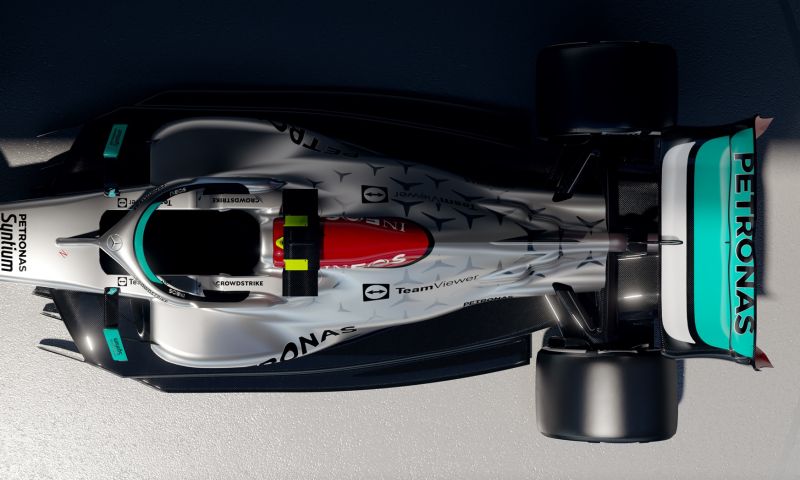Analysis of the W13 | Mercedes reveals impressive 'bottleneck'
Mercedes F1 Media
F1 News

- GPblog.com
Unlike Red Bull Racing, Mercedes did present the new car for the 2022 Formula One season. Of course, Mercedes will also keep some things in reserve, but there are certainly new things to discover from the first images.
Comparison with Ferrari and Aston Martin
In an earlier comparison article, we looked at the interesting differences between Mercedes' W13 and the Ferrari. For example, we noticed that Mercedes has a much more convex and wider nose than Ferrari. Also, the front wing is shaped with an arc more than the flat front wing that Ferrari presented on Thursday.
Important details also stood out in the comparison with Aston Martin's AMR22. For example, Mercedes has a particularly narrow 'bottleneck' compared to Lawrence Stroll's team and the wheelbase is again much longer. These were already many differences, but there are even more details to discover about the Mercedes-AMG F1 W13 E Performance.
Ground effect tunnels from Mercedes.

Starting with the front view. Indeed, in addition to the nose and front wing, the floor of the car stands out in the photo. Although much seems to disappear due to the studio shot, the front view actually shows the so-called tunnels under the car. These tunnels are supposed to provide the ground effect by which the car is sucked to the ground. This is a different way of generating downforce than teams were used to in recent years.
In recent years, teams were used to controlling downforce from the front wing, but this year it is much more strictly defined. Looking at Mercedes' front wing, however, it is noticeable that it is different from the one we have seen so far. So Mercedes seems to have found room there to play with the design somewhat.
W13 longer than the competition

The top view is perhaps the most interesting of the W13. So, like its predecessors, the car has been made as long as possible. Whereas Red Bull Racing with Adrian Newey often opts for a shorter wheelbase, at Mercedes they have always been enamored with the longer wheelbase. This is especially helpful on higher speed circuits, where a short wheelbase, on the other hand, helps to make turns more easily on short circuits with lots of turns. That Mercedes chooses this strategy is not entirely crazy given its dominant engine.
Mercedes' "bottleneck" is perhaps the most clever. Teams prefer to make the car as narrow as possible to minimize air resistance, and so they choose to make the car as narrow as possible towards the end. However, the engine needs air and space to stay cool, but that hardly seems necessary in Mercedes' case.
W13 has extreme 'bottleneck'
In fact, the W13 is the narrowest design we have seen of the new designs so far. In addition, the sidepod entrance is only a small square, so the engine also gets little cooling. The sidepod must have a certain width for the crash test, but it is clear that Mercedes has already made an 'undercut' below those set dimensions, and behind the sidepod the chassis is quickly pressed close to the engine. Thus Mercedes saves a lot of space, especially compared to the wide sidepods of Aston Martin and Ferrari.

In the side view you can see those 'dents' even more. Just after 'nas' of the sponsor Petronas, the chassis is pushed completely inward. On the stripes running underneath you can see that it is already completely pressed in there, creating the 'undercut' under the sidepod. From the sponsor TeamViewer you can see that the chassis is being dented even further. In addition, in the side view, you can see the slots that lead into the tunnels for under the floor.